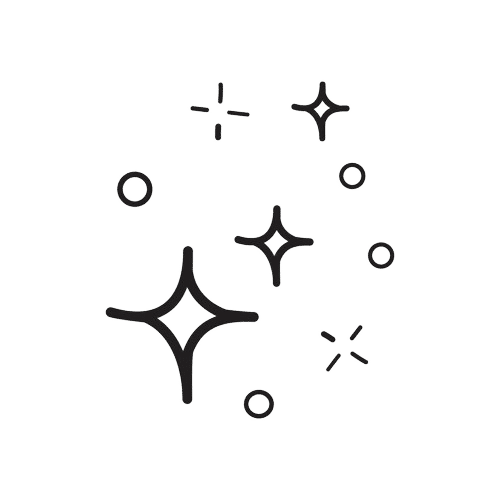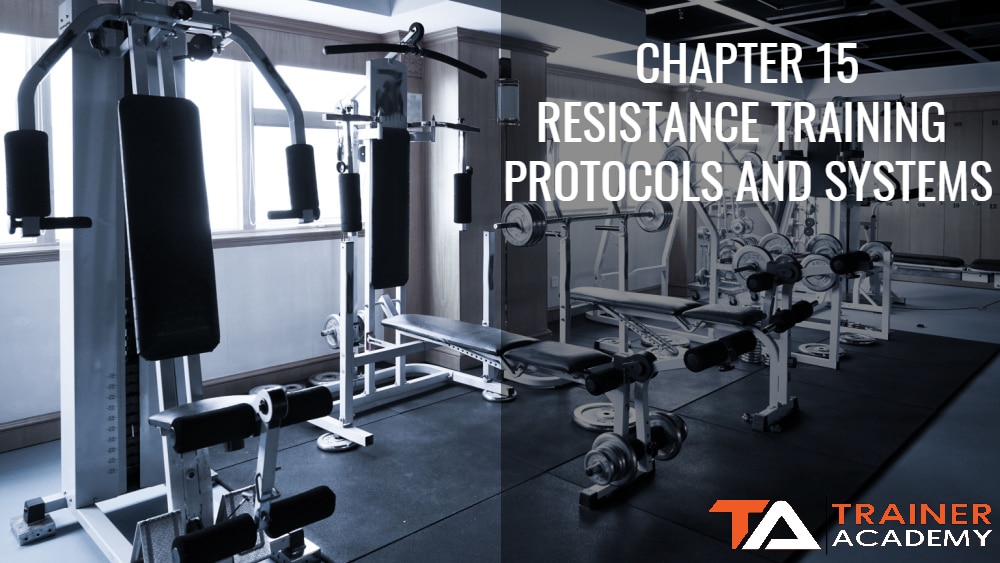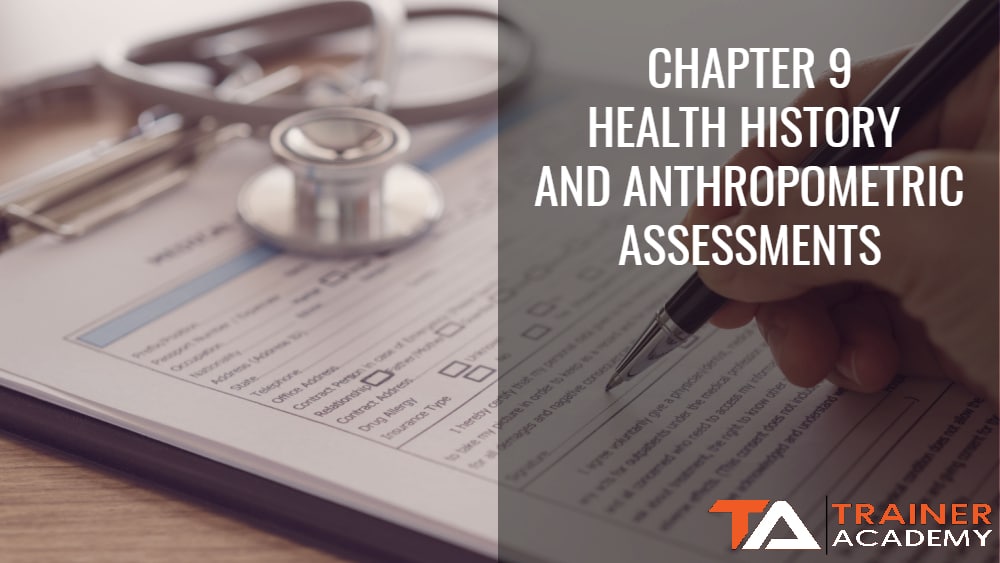Corrective exercise involves an integrated approach to identifying muscle imbalances and creating an individualized program of flexibility, isolated strengthening, and functional movements to restore proper muscle balance, improve movement quality, and reduce injury risk in otherwise healthy clients.
Fitness professionals with an understanding of corrective exercise and its application can provide better service and results for clients with underlying muscular imbalances.
Introduction to Corrective Exercise Methods
While there is some overlap between corrective exercise modalities and physical therapy modalities, corrective exercise is used by certified trainers to address movement and postural issues in clients without serious injuries.
Physical therapists utilize similar modalities to address specific injury issues in patients and rehabilitate them to normal day-to-day activity.
Fitness professionals must understand that while the approaches are similar in many cases, physical therapists have many years of advanced training, preparing them to deal with medical rehabilitation. Personal trainers are not qualified to treat medical injuries requiring physical therapy.
Diagnosing and treating injuries falls outside the scope of practice for a CPT, but developing individualized exercise programs that help someone move better is within the Trainer Academy CPT Scope of Practice.
Corrective exercise restores the proper function of the kinetic chain which may reduce injury risk and fatigue. The saying “straighten before you strengthen” emphasizes the importance of proper movement and the use of corrective exercises to achieve that goal.1
Corrective exercise focuses on improving the qualities of mobility, stability, and common movement patterns using modalities such as foam rolling, stretching, activation, and integration exercises. The purpose of corrective exercise is not to increase physiological parameters like aerobic and anaerobic power, but to restore muscle tone, muscle length, muscle tension, and freedom of movement.2
An appropriately designed corrective exercise program will help to improve stability, proprioception, timing, and motor control while addressing limitations and asymmetries in basic movement patterns.
To use corrective exercises effectively, the CPT will need an understanding of the proper modalities, when to use them, and how to sequence them in the correct order with progressions.
Corrective Exercise Rationale
Muscle imbalances caused by poor posture, repetitive movements, and prolonged periods of sitting create shortened and lengthened muscles, which causes weakness and tightness in those muscles.1, 3, 5 This leads to faulty alignment of joints and alters the physiological and neurological properties of the muscle that results in movement compensation and dysfunction.1, 2, 3
Joint stability, the ability to maintain and control joint movement and position, and joint mobility, the range of motion (ROM) around a joint, are maintained by proper length-tension and force-couple relationships of muscles, proper arthrokinematics, proprioceptors, and mechanoreceptors.2
An optimal length-tension relationship is the length of the muscle where the greatest number of potential cross bridge sites occurs, allowing for optimal force production of the muscle.
Muscle imbalances alter this relationship and decrease the force output of the muscle.1, 2, 3 Both the shortened muscle and lengthened muscles on opposite sides of the joint are outside of their optimal length-tension relationships and do not produce force effectively.
Muscles in a lengthened state can chronically activate muscle spindles. Muscle spindles, mechanoreceptors located in the muscle belly, detect the length and rate of stretch in the muscle. When muscle spindles detect an overstretching, they cause the antagonist muscle to contract to prevent damage. The tension from the antagonist contract discharge of GTOs (Golgi tendon organs) results in decreased force production.1, 3
Force couples from muscles provide opposing directional or contralateral pulls at joints.1 These force couples maintain proper posture, and joint alignment, allowing for normal movement and distribution of forces to occur. Tight and weak muscles alter the force couples, causing changes in posture and arthrokinematics, resulting in compensatory movement and losses in stability and mobility.1,2,3
Altered force couples and length-tension relationships weaken the muscles on both sides of the joint. Corrective exercise modalities are an effective way to address muscle imbalances and restore mobility and stability to allow proper motion and mechanics.
Corrective exercise modalities must follow a systematic progression. Performing modalities that address mobility and stability before movement and performance is the best approach for long term success and injury prevention in clients with non-clinical movement dysfunctions.
Exercising without regard for mobility and stability may do more harm than good and does not adequately develop an exercise program based on the client’s needs.1
Corrective Exercise Methods
Results from the client’s movement assessments will dictate where to start.
Mobility and stability issues should be resolved before any movement is performed. Initially, the focus will be on correcting muscle imbalances to restore freedom of movement. Self-myofascial release (SMR) is used for loosening up tight shortened muscles and relaxing hypertonic muscles to restore ROM.4
Foam rolling targets tightened areas in muscles called trigger points, which can decrease ROM by decreasing the elasticity of the connective tissue.3 Commonly performed with a foam roller, SMR works by stimulating GTOs, causing autogenic inhibition and relaxing the affected area.
Increases in blood flow help alleviate inflammation as well. SMR may be performed alone and some evidence suggests that it may improve ROM without the decreases in force production seen with static stretching.1, 3, 4 SMR may be performed before and after exercise, but to enhance results it should be before any other type of stretching.1,3,5
Along with SMR, passive, active, and PNF stretching can help correct muscle imbalances, increase joint range of motion, decrease the excessive tension of muscles, relieve joint stress, improve the extensibility of the musculotendinous junction, maintain the normal functional length of all muscles, improve neuromuscular efficiency, and improve function.
Static stretching reduces the sensitivity of muscle spindles and lengthens connective tissue when the stretch force is applied.1 Generally, the client performs a brisk aerobic warm-up to increase core temperature, then applies SMR to loosen up the muscle followed by static stretching.
Restoring ROM and addressing instability are the first concerns. While flexibility techniques are useful for alleviating shortened muscles, the antagonist is usually lengthened and underactive, which requires restoring the muscle’s ability to produce force at its resting length. Activation exercises will address this issue by restoring endurance, strength, and proper recruitment patterns to the underactive muscle.
Restoring muscle imbalances using flexibility and activation exercises will restore the length-tension relationships and altered force-couples allowing for the required mobility and stability needed for functional movement to occur. From there, integration exercises can be used to restore dynamic balance and proper movement patterns.
To avoid training the muscle in its lengthened state, activation exercises initially involve isometric movements at joint-specific angles. Supportive devices like the wall, floor, or back of a chair can be used to provide kinesthetic awareness and allow the client to understand the alignment of the joints involved.1
To avoid training the muscle in the lengthened state, the exercise can be progressed to greater ranges of motion, progressing from static to dynamic movements. The goal of corrective flexibility is to restore the muscle’s force production at normal and resting lengths, not to become flexible beyond normal requirements.
Once the lengthened and shortened muscles have been addressed and the client demonstrates the necessary mobility and stability in the area, the progression to dynamic movements happens though can incorporate integration exercises to work the body in a synchronous and coordinated fashion.1
After correcting muscle imbalances and restoring mobility and stability to an area, the athlete must retrain the poor compensatory motor patterns created previously. Integration exercises will restore and groove proper movement patterns.1, 3, 4 These exercises incorporate multi joint movements and movements in multiple planes of motion.
A key concept when using the corrective exercise strategies and modalities is that “proximal stability promotes distal mobility.” This concept states that for distal joints to be mobile, such as the hips and shoulders, proximal joints must be stable. Proximal stability revolves primarily around stabilizing the core and spine. If these areas are unstable, risk of injury goes up and distal joints and muscles may increase tightness to prevent injury as a response to the instability in the core.
A properly strengthened, stable core is key for improving mobility in the commonly-restricted areas of the human body.
This is an example of a proper corrective exercise progression:
- Stabilize the lumbar spine
- Restore mobility to the hips and thoracic spine
- Stabilization of the shoulder girdle and glenohumeral joint1
Corrective exercise is an important component of any CPT’s training acumen. Often trainers come across common movement dysfunctions such as a client with pronation syndrome due to tight hip adductors or weak hip external rotators causing knee valgus.
They might have lower crossed syndrome, causing an anterior pelvic tilt due to tight hip flexors and weak extensors, adding to the excessive lumbar lordosis.
The client might have upper cross syndrome from tight pectoralis muscles and weak middle and lower trapezius, thus creating rounded shoulders and a kyphotic thoracic spine.3
These common syndromes will inhibit clients from moving safely and effectively, which will compromise the results of their exercise program while increasing their risk of injury.
CPTs not only need to be able to identify and correct the muscle imbalances associated with these syndromes, but they should correct the faulty motor patterns to restore proper movement. Knowledge of the corrective exercise modalities and when to use them is an integral part of the CPT’s training toolbox.
Corrective Approaches Based on Movement Assessments
Overhead Squat, Single Leg Squat, and Lunge/Step Over Assessments
Knee Valgus
Suspected Tight Muscles:
- Hip adductors, tensor fascia latae (TFL), gastrocnemius, soleus, IT band, short head of biceps femoris
Suspected Weak Muscles
- Gluteus maximus, gluteus minimus, anterior and posterior tibialis
Self Myofascial Release (SMR)
- Gastrocnemius, soleus, adductors, TFL, IT band, short head of biceps femoris
- Hold each area for a minimum of 30 seconds
Static Stretch
- Gastrocnemius, soleus, adductors, adductors, TFL, biceps femoris
- 30 second hold or 7-10 second isometric contraction and 30 second hold
Isolated Strengthening
- Gluteus maximus, gluteus medius, anterior tibialis, posterior tibialis
- 10–15 repetitions for each exercise with 2-second isometric hold and 4-second eccentric contraction
Functional Exercises
- Ball squats, step-ups, lunges, single leg squats
- 10-15 repetitions as an integrated exercise
Pronation
Suspected Tight Muscles
- Gastrocnemius, soleus, peroneals, short head of biceps femoris
Suspected Weak Muscles
- Tibialis group, medial hamstrings
Self Myofascial Release (SMR)
- Lateral gastrocnemius, peroneals, short head of biceps femoris
- Hold each area for a minimum of 30 seconds
Static Stretch
- Gastrocnemius, soleus, short head of biceps femoris
- 30 second hold or 7-10 second isometric contraction and 30 second hold
Isolated Strengthening
- Posterior tibialis, anterior tibialis, hamstrings
Functional Exercises
- Step up to balance, and single leg balance reach for 10-15 repetitions as integrative exercise5
Arms Falling Forward
Suspected Tight Muscles
- Latissimus dorsi, pectoralis, and thoracic spine (T-Spine)
Isolated Strengthening
- Middle and lower trapezius, and rotator cuff
Self Myofascial Release (SMR)
- Latissimus dorsi and thoracic spine
- Hold each area for a minimum of 30 seconds
Static Stretch
- Latissimus dorsi and pectoralis major
- Hold for at least 30 seconds
Isolated Strengthening
- Rotator cuff, middle and lower trapezius
Functional Exercises
- Squat to row, 10-15 repetitions
Excessive Forward Lean
Suspected Tight Muscles
- Psoas/iliacus, gastrocnemius, and soleus
Suspected Weak Muscles
- Gluteus maximus, anterior tibialis, erector spinae, and core stabilizers
Self Myofascial Release (SMR)
- Gastrocnemius, soleus, and hip flexors
- Hold each area for a minimum of 30 seconds
Static Stretch
- Gastrocnemius, soleus, abdominals, and hip flexors
- 30 second hold or 7-10 second isometric contraction followed by a 30 second hold
Isolated Strengthening
- Anterior tibialis, gluteus maximus, erector spinae, and core stabilizers
Functional Exercises
- Ball wall squat with overhead press 10-15 repetitions
Excessive Lower Back Arch
Suspected Tight Muscles
- Psoas major and minor, iliacus, erector spinae, and latissimus dorsi
Suspected Weak Muscles
- Gluteus maximus and abdominals
Self Myofascial Release (SMR)
- Hip flexor complex and lats
- Hold each area for a minimum of 30 seconds
Static Stretch
- Hip flexor complex, lats, and erector spinae
- 30 second hold
Isolated Strengthening
- Gluteus maximus and abdominals
Functional Exercises
- Ball wall squat with overhead press
Asymmetrical Weight Shift
Suspected Tight Muscles
- Adductors, TFL, IT band on same side and piriformis, biceps femoris, gastrocnemius, and soleus on opposite side
Suspected Weak Muscles
- Gluteus medius same side, and adductors opposite side
Self Myofascial Release (SMR)
- Adductors, TFL, and IT band on the same side, and piriformis, biceps femoris, gastrocnemius, and soleus on the opposite side
- Hold each area for a minimum of 30 seconds
Static Stretch
- Adductors, TFL on the same side, and piriformis, gastrocnemius, soleus, and biceps femoris on the opposite side
Isolated Strengthening
- Gluteus medius (same side) and adductors (opposite side)
Functional Exercises
- Ball wall squat with overhead press
Excessive Lower Back Rounding
Suspected Tight Muscles
- Hamstrings and adductor magnus
Suspected Weak Muscles
- Gluteus maximus, hip flexors, and erector spinae
Self Myofascial Release (SMR)
- Hamstrings and adductor magnus
- Hold each area for a minimum of 30 seconds
Static Stretch
- Hamstrings and adductor magnus
Isolated Strengthening
- Gluteus maximus, hip flexors, and erector spinae
Functional Exercises
- Ball wall squat with overhead press
Forward Head
Suspected Tight Muscles
- Thoracic spine, sternocleidomastoid, levator scapulae, and upper trapezius
Suspected Weak Muscles
- Deep cervical flexors, cervical erector spinae, and lower trapezius
Self Myofascial Release (SMR)
- Thoracic spine, sternocleidomastoid, levator scapulae, and upper trapezius
- Hold each area for a minimum of 30 seconds
Static Stretch
- Sternocleidomastoid, levator scapulae, and upper trapezius
30 second hold
Isolated Strengthening
- Cervical flexors, cervical erector spinae, and lower trapezius
- 10-15 repetitions with a 2 second isometric hold and a 4 second eccentric contraction
Functional Exercises
- Ball combo with cervical retraction for 10-15 repetitions
Push & Pull assessments
Forward Head
Suspected Tight Muscles
- Thoracic spine, sternocleidomastoid, levator scapulae, and upper trapezius
Suspected Weak Muscles
- Deep cervical flexors, cervical erector spinae, and lower trapezius
Self Myofascial Release (SMR)
- Thoracic spine, sternocleidomastoid, levator scapulae, and upper trapezius
- Hold each area for a minimum of 30 seconds
Static Stretch
- Sternocleidomastoid, levator scapulae, and upper trapezius
30 second hold
Isolated Strengthening
- Cervical flexors, cervical erector spinae, and lower trapezius
- 10-15 repetitions with a 2 second isometric hold and a 4 second eccentric contraction
Functional Exercises
- Ball combo with cervical retraction for 10-15 repetitions
Excessive Lower Back Arch
Suspected Tight Muscles
- Psoas major and minor, iliacus, erector spinae, and latissimus dorsi
Suspected Weak Muscles
- Gluteus maximus and abdominals
Self Myofascial Release (SMR)
- Hip flexor complex and lats
- Hold each area for a minimum of 30 seconds
Static Stretch
- Hip flexor complex, lats, and erector spinae
- 30 second hold
Isolated Strengthening
- Gluteus maximus and abdominals
Functional Exercises
- Ball wall squat with overhead press
Scapular Winging
Suspected Tight Muscles
- Latissimus dorsi, pectorals, serratus anterior, T-spine
Suspected Weak Muscles
- Middle and lower trapezius
Self Myofascial Release (SMR)
- Latissimus dorsi and T-spine
- Hold each area for a minimum of 30 seconds
Static Stretch
- Lats, pecs, and serratus anterior
- 30 second hold
Isolated Strengthening
- Middle and lower trapezius
Functional Exercises
- Standing 1-arm cable chest press for 10-15 repetitions
Scapular Elevation
Suspected Tight Muscles
- Upper trapezius, levator scapulae, and pectoral muscles
Suspected Weak Muscles
- Middle and lower trapezius
Self Myofascial Release (SMR)
- Latissimus dorsi and T-spine
- Hold each area for a minimum of 30 seconds
Static Stretch
- Lats, pecs, and serratus anterior
- 30 second hold
Isolated Strengthening
- Middle and lower trapezius
Functional Exercises
- Single leg Romanian deadlift with PNF pattern for 10-15 repetitions
Technique Descriptions for Select Exercises
SMR techniques
Calves
- Begin in a seated position with legs straight.
- Place foam roller under calf.
- Position non-SMR leg on top of the SMR leg to increase pressure.
- Roll calf area upwards from the ankle until you find a tender spot.
- Hold tender spot for 30 seconds.
TFL/IT band
- Begin lying on one side, the foam roller just in front of the hip.
- Cross the top leg over lower leg, with foot touching the floor.
- Slowly roll from hip joint towards the knee until you find a tender spot.
- Hold tender spot for 30 seconds.
Piriformis
- Begin seated on the foam roller.
- Cross one ankle over the opposite thigh.
- Put weight into the hip of the crossed leg.
- Slowly roll on the posterior hip until you find a tender spot.
- Hold tender spot for 30 seconds.
Latissimus Dorsi
- Begin lying on one side.
- Extend the ground side arm with thumb facing upward.
- Place the foam roller under the armpit, perpendicular to the lat.
- Roll across area until you find a tender spot.
- Hold tender spot for 30 seconds.
Static Stretching Techniques
Perform 1-3 sets and hold for a minimum of 30 seconds.
Gastrocnemius
- Begin standing facing a wall or rack.
- Step one leg back, maintain a straight knee and hip and ensure heel remains on floor.
- Lean toward the wall by bending arms, engage glutes and quadriceps while keeping heels on the floor.
- Hold for 30 seconds.
Tensor Fasciae Latae
- Begin in a staggered stance, keep slight bend in front knee and back leg straight.
- Squeeze gluteal muscles while rotating pelvis posteriorly.
- Slowly move body forward until you feel the stretch in the front of the rear hip.
- To increase the stretch, raise the arm up and over to the opposite side while maintaining pelvis position.
- Hold for 30 seconds.
- Repeat on both sides.
Hip flexor
- Begin kneeling with front and legs bent to 90 degrees.
- Rotate pelvis posteriorly and squeeze gluteal muscles of the back leg.
- Move body forward you feel a stretch in the front of the back hip.
- To increase intensity, raise arm and bend to the opposite side.
- Hold for 30 seconds.
Adductor
- Begin standing with legs in a straddled stance, keep feet shoulder-width apart or further depending on flexibility.
- Engage core and rotate pelvis posteriorly
- Move hips sideways by bending at the right leg and shifting to the right, keeping the left leg straight.
- Move sidewards until a stretch is felt in the inner thigh of the left leg.
- Hold for 30 seconds.
Latissimus dorsi
- Begin kneeling in front of a stability ball.
- Extend both arms in front of you with thumbs upward, keeping a slight bend in the elbow, and place the blades of your hand on the ball.
- Engage core, rotate pelvis posteriorly, and gently round through the back.
- Slowly extend arms until a stretch is felt in the lat area under each armpit.
- Hold for 30 seconds.
Note: this stretch can be performed one arm at a time or both at the same time.
Pectoralis
- Stand next to a tall object that will allow you enough room to place your forearm vertically against the object with elbow and shoulder joints each bent to 90 degrees.
- With forearm in position, engage core and slowly lean forward until a stretch is felt in the anterior shoulder and chest region.
- Hold the stretch for 30 seconds.
- Repeat on both sides.
Upper Trapezius/Scalenes
- Begin standing with an upright posture.
- Engage core to prevent torso movement.
- Retract and depress the scapula on the left side to target the left upper trapezius and scalenes.
- Slowly tuck chin and laterally flex the neck, by bringing your ear to your right shoulder, until a stretch is felt in the left neck and trapezius.
- Hold the stretch position for 30 seconds.
- Repeat on the opposite side.
Strengthening Exercises
Perform 1-3 sets of 10-15 repetitions for all exercises
Prisoner Squat
- Begin standing with upright posture and place hands behind the head with shoulders abducted and flexed to 90 degrees.
- Engage core and lower into a squat by extending hips backwards and while lowering.
- When you reach the target depth, extend through the hips, knees, and ankles to return to the top position.
- Repeat for all repetitions.
Note: proper squat mechanics including knees tracking toes, no excessive lean, arched back, or other compensations should be permitted.
Multiplanar 3-Way Lunge with Reach
- Begin standing with an upright posture.
- Engage core and step forward (sagittal plane), and descend into a lunge position while reaching forward.
- Use hip and thigh muscles to push up and back to the start position.
- For the next repetition, perform a side lunge by stepping laterally with the working leg, bending the knee, and lowering into the side lunge.
- Push away and down with the working foot to return to the starting position.
- For the next repetition, step laterally with the left foot while rotating the foot, leg, and knee 90 degrees so your are now facing left instead of forward.
- Drive through the floor and return to the start position.
- Repeat the 3-way lunge flow for the target number of repetitions.
Step Up to Balance
- Begin standing with an upright posture and a step or box in front of you. To add resistance, hold a dumbbell in each hand.
- Step onto the box with one leg, keep foot pointed forward and knee tracking with the toes.
- Push through the step-up foot to stand straight.
- Bring the non-step up foot up by flexing 90 degrees at both the hip and knee.
- At the top, balance for 1-2 seconds with the non-stepping ‘floating’ leg elevated in the 90-90 position.
- Step back to the floor with the floating leg and return to the start position.
- Repeat on both sides for target repetitions.
Single Leg Touchdown Squat
- Begin standing with an upright posture and elevate one foot about 4 inches above the ground by flexing at the knee and hip.
- Bend the ankle, knee, and hip of the standing to perform the single leg squat while reaching the opposite hand toward the planted foot.
- Repeat on both sides for the target repetitions.
Tube Walking Side-Side
- Begin standing with an upright posture.
- Place resistance tubing around legs either just above or below the knee (easier) or at the ankle (harder).
- Step laterally against the band resistance. Keep feet pointing forward with a slight bend in the knee and maintain an athletic position.
- Step with the trailing foot to complete the repetition movement.
- Perform lateral walks in both directions for the target repetitions.
Medicine Ball Lift and Chop
- Begin standing with an upright posture with knees slightly bent and feet pointing forward.
- Grab a medicine ball with both hands and extend forward until elbows are fully extended.
- With straight arms, lower the medicine ball diagonally towards the floor as you rotate through the torso.
- Reverse the diagonal movement, bringing the medicine ball up towards the opposite shoulder.
- Perform target repetitions for both sides.
Marching
- Begin supine with knees bent at 90 degrees and hips bent at 45 degrees, feet flat with toes pointing forward, and keep arms by sides.
- Slowly lift one foot off the floor by flexing at the hip while keeping knees bent at 90 degrees.
- Raise the knee as high as possible while maintaining control.
- Pause at the top position and slowly return to the starting position.
- Repeat on each side for the target repetitions
2-Legged Floor Bridge
- Begin supine with knees bent at 90 degrees and hips bent at 45 degrees, feet flat with toes pointing forward, keep arms by sides.
- Drive through both feet while engaging glutes until the hip crease is roughly straight.
- Slowly lower pelvis to the floor to return to the starting position.
- Repeat for target repetitions.
Prone Cobra
- Begin on the floor in a prone position with arms and legs extended.
- Engage gluteal muscles and pinch shoulder blades together.
- Lift chest and arms off the floor keeping thumbs pointing up.
- Thighs, knees, feet, chest, arms, and head should all be off the floor during engagement.
- Hold the position for 1 to 2 seconds, then slowly lower to the start position.
- Repeat for the target repetitions.
Plank
- Begin on the floor in a prone position with forearms on the ground and feet together, elbows directly under shoulders.
- Lift body off the ground by engaging core and glutes while supporting body weight through the forearms and feet. Keep chin tucked and back flat or neutral throughout.
- Hold for target time and repeat for target repetitions.
Ball Crunch
- Begin supine with stability ball under the low back, bend knees to a 90 degree angle.
- Crunch upper body forward by flexing the abdominals and raising the chest and neck.
- Slowly return to the start position.
- Repeat for the target repetitions.
Cable Rotation
- Begin standing facing a cable machine, grasping handle with straight arms. Keep an upright posture and knees slightly flexed. The angle of pull should be opposite the direction of the target direction.
- Keeping arms straight, rotate torso against the angle of pull until facing the opposite direction.
- Return to the start position.
- Repeat for the target repetitions.
Single Leg Romanian Deadlift
- Begin standing with an upright posture with feet shoulder-width apart and knee slightly flexed.
- Lift the non-working leg off of the floor roughly 4 inches.
- Keeping a neutral spine, bend forward at the hip while kicking the floating leg backward and reaching towards the planted foot with the opposite hand.
Incorporating Corrective Exercise into Standard Programs
Once the client is able to perform movement screenings without major dysfunction, they may begin to transition to a regular fitness program. However, corrective exercise techniques can be incorporated
Tight overactive areas can be addressed with SMR and other stretching techniques during the warmup and cooldown.
Exercises that target the stabilizers of the shoulder can be used as warmups for upper body exercise and exercises that target the hip and abdominal stabilizers can be used to warm up lower body muscles.
Dynamic stretches that mimic the conditioning exercises can be used to warm up as well. Corrective exercise can be used as a form of active recovery, or the exercises can be grouped together as a circuit on their own.
Overall, corrective exercise can be used in the warmup, cool down, and in the main conditioning component of the workout once the client can safely and competently perform functional exercises.
Summary
Corrective exercise refers to a combination of techniques and approaches used to address postural and muscular imbalances in otherwise healthy clients. Fitness professionals benefit from knowledge of corrective exercise because it allows them to more effectively bring conditioned clients into a state of exercising regularly without injury, leading to better health outcomes.
References
- Seidi F, Bayattork M, Minoonejad H, Andersen LL, Page P. Comprehensive corrective exercise program improves alignment, muscle activation and movement pattern of men with upper crossed syndrome: randomized controlled trial. Sci Rep. 2020;10(1):20688. Published 2020 Nov 26. https://doi.org/10.1038/s41598-020-77571-4
- Bagherian S, Rahnama N, Wikstrom EA. Corrective Exercises Improve Movement Efficiency and Sensorimotor Function but Not Fatigue Sensitivity in Chronic Ankle Instability Patients: A Randomized Controlled Trial. Clin J Sport Med. 2019;29(3):193-202. https://doi.org/10.1097/JSM.0000000000000511
- Mehri A, Letafatkar A, Khosrokiani Z. Effects of Corrective Exercises on Posture, Pain, and Muscle Activation of Patients With Chronic Neck Pain Exposed to Anterior-Posterior Perturbation. J Manipulative Physiol Ther. 2020;43(4):311-324. https://doi.org/10.1016/j.jmpt.2018.11.032
- MacDonald, G.Z. et al. (2013). An acute bout of Self-myofascial release increases range of motion without a subsequent decrease in muscle activation or force. Journal of Strength & Conditioning Research,27,3, 812-821.
- Sullivan, K.M. et al. (2013). Roller-massager application to the hamstrings increases sit-and-reach range of motion within five to ten seconds without performance impairments. lnternational Journal of Sports Physical Therapy,8,3,22U236.
- Titcomb DA, Melton BF, Miyashita T, Bland HW. Evidence-Based Corrective Exercise Intervention for Forward Head Posture in Adolescents and Young Adults Without Musculoskeletal Pathology: A Critically Appraised Topic. J Sport Rehabil. 2022;31(5):640-644. Published 2022 Feb 16. https://doi.org/10.1123/jsr.2021-0381
- Seidi, Foad & Rajabi, Reza & Ebrahimi, Ismail & Alizadeh, Mohammad & Minoonejad, Hooman. (2013). The efficiency of corrective exercise interventions on thoracic hyper-kyphosis angle. Journal of back and musculoskeletal rehabilitation. 27. 10.3233/BMR-130411.












